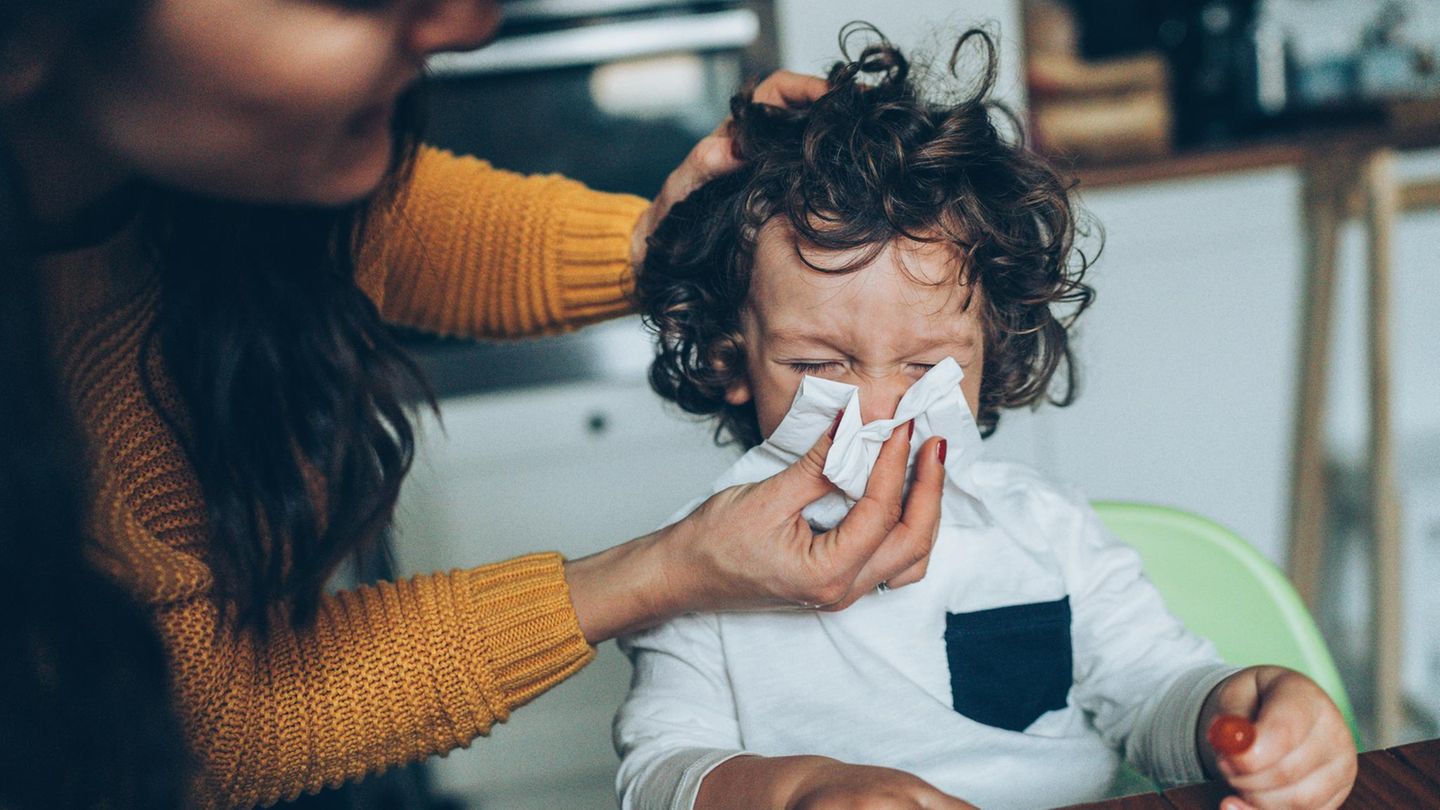colds
How many respiratory infections are normal in young children?
Copy the current link
Add to watchlist
In the fall and winter, many children are constantly coughing up, one coughing episode leading to the next. When should you worry? A pediatrician explains it.
Children are born with a kind of basic immunological equipment – the innate immune system. The body still reacts to a pest in a non-specific manner, i.e. without specifically recognizing a type of pathogen. In the first weeks and months of life, the little ones receive various vaccinations in order to be immune to serious illnesses and their possible complications in the future – such as whooping cough, diphtheria and polio.
When dealing with, for example, cold and cold germs, the child’s immune system continually gains further experience – it trains its defenses. Parents often have the feeling that the baby or toddler is constantly rotting – or that one coughing episode continues into the next.
The pediatricians can usually calm them down. “Six to eight upper respiratory tract infections can occur in children in the first year of life,” says Burkhard Rodeck, general secretary of the German Society for Child and Adolescent Medicine and former medical director of the Osnabrück Christian Children’s Hospital.
Small children can have an infection every month
“At the age of one to three years, there can be twelve infections per year. That roughly means: one infection every month,” explains Rodeck. “If you imagine that an infection can last a week, that’s a long time. Parents often have the impression: My child must be seriously ill or have an immune deficiency.” But these frequencies and times are completely within limits.
Burkhard Rodeck says: “Even among primary school students, six to ten infections per year are not yet worrying.”
And another tip for parents: “Small children often have a fever when they have respiratory infections. If the fever lasts up to three days, parents don’t need to go to the pediatrician – if the child is little affected in the phases in which the fever is slightly lower. Then it is usually a harmless infection.” If the episode with fever lasts longer than three days, parents should consult their pediatrician.
Source: Stern
I’m Caroline, a journalist and author for 24 Hours Worlds. I specialize in health-related news and stories, bringing real-world impact to readers across the globe. With my experience in journalism and writing in both print and online formats, I strive to provide reliable information that resonates with audiences from all walks of life.




